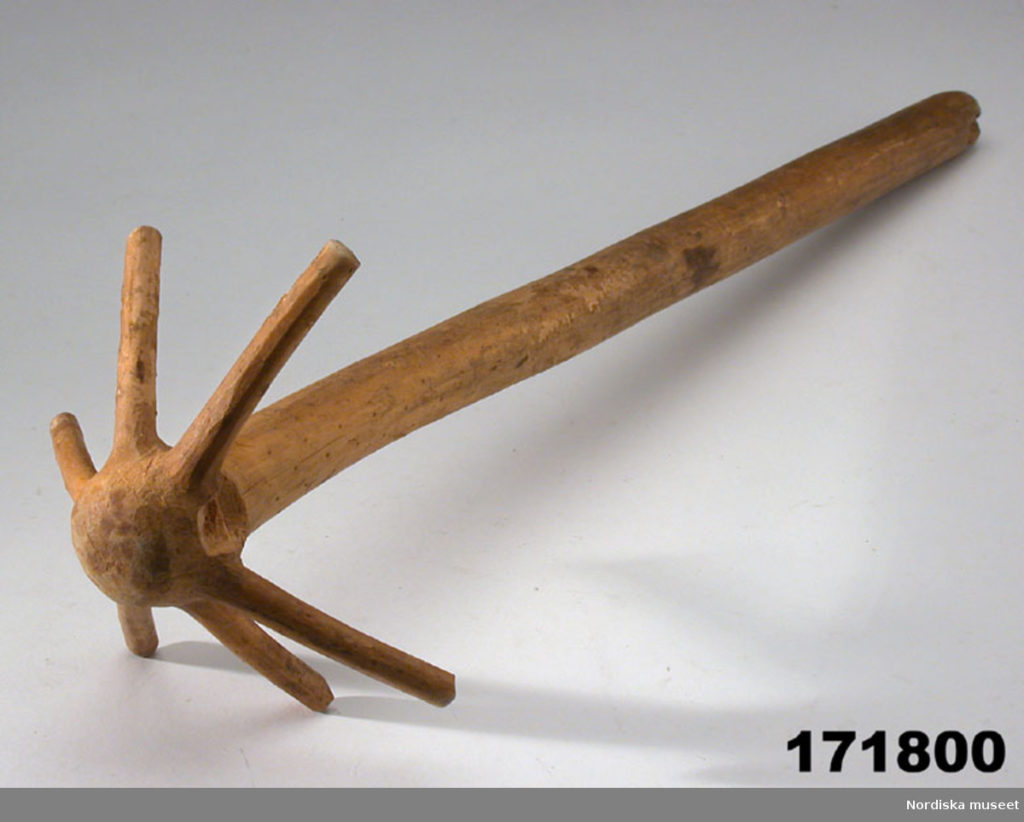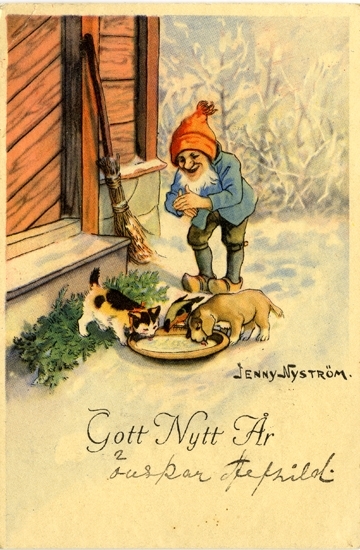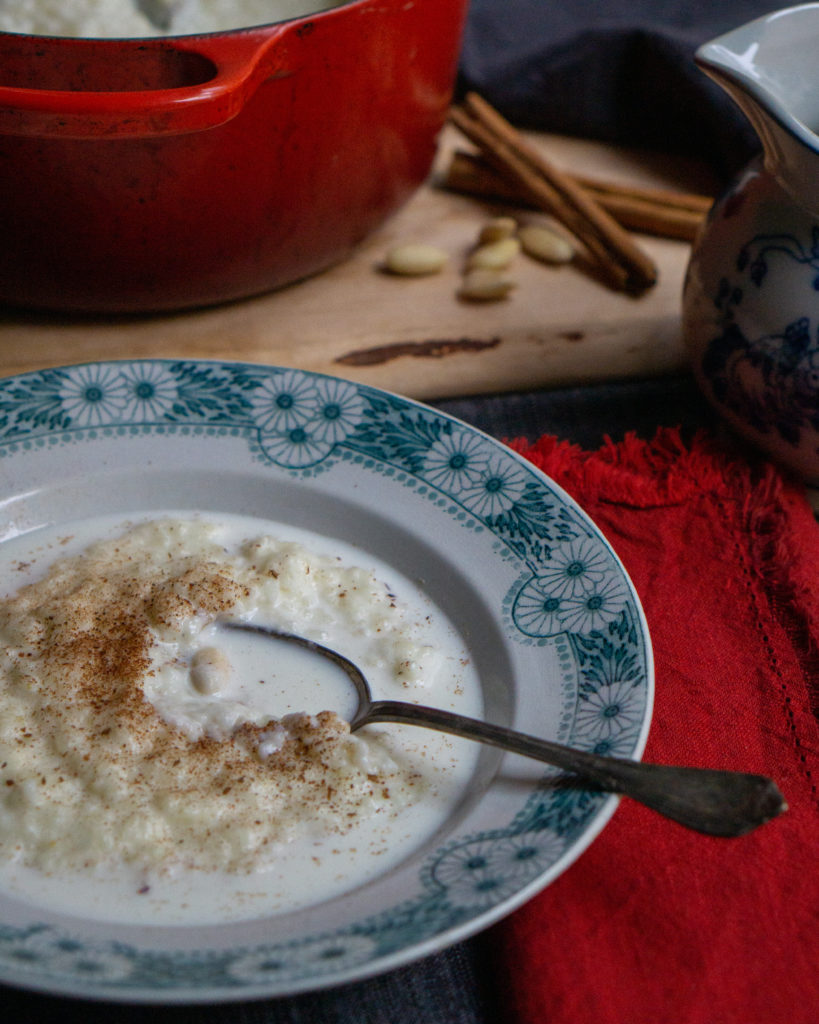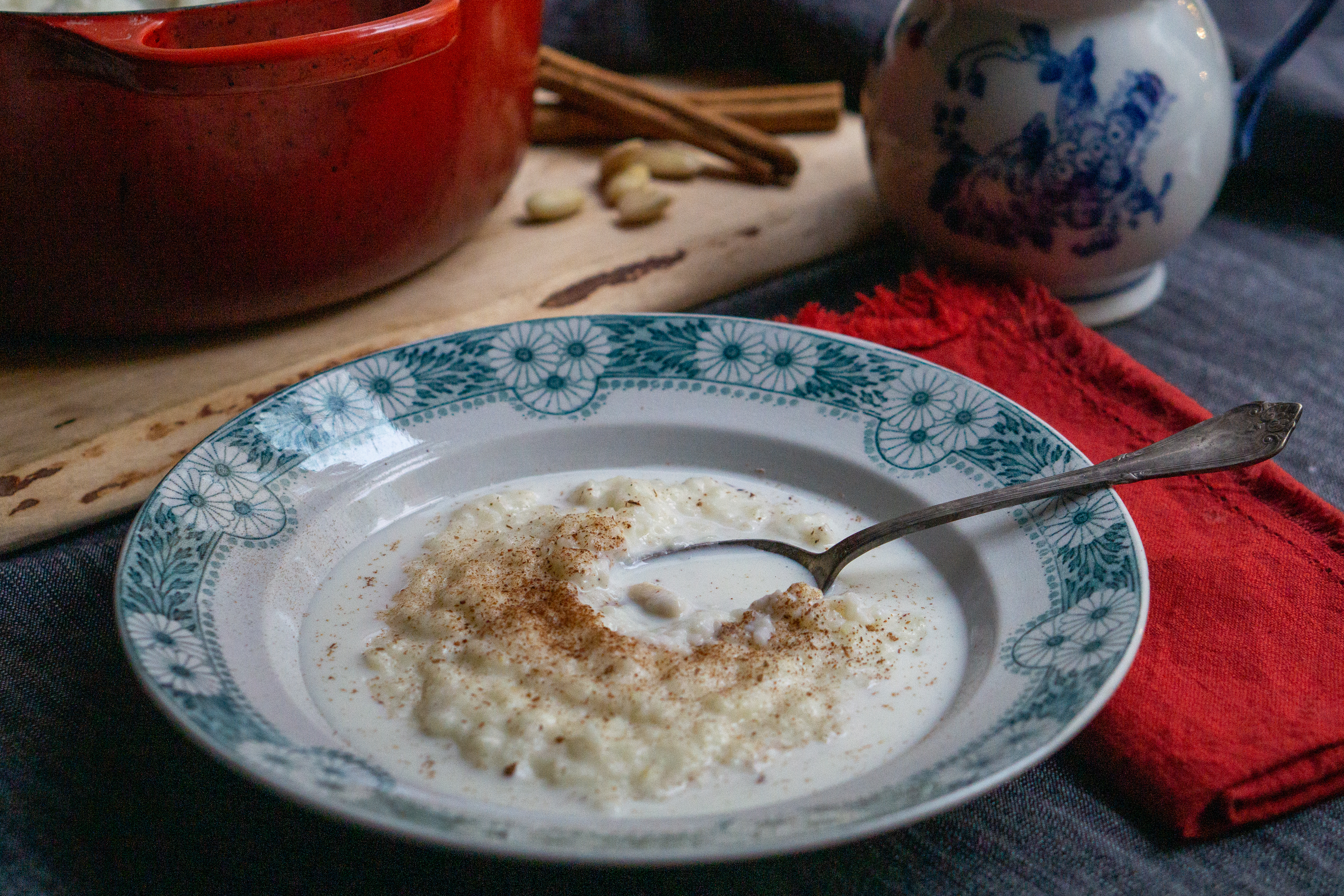Even though Sweden wasn’t directly involved in the World Wars, the country still saw times of strict rations and restrictions on food. In newspapers from the Christmas of 1917, you can find suggestions for diluting sausages with cheaper ingredients and gathering leftover fat from meat as a basis for pastries. Particularly one issue seemed to bother those in charge of cooking: the Christmas rice porridge.
After all, the Swedish government had hoarded rice for a period of time. The relief is noticeable when the Swedish rice was released at the beginning of December, rationed to 100 grams per person. Still, shortages on milk products were almost as bad, and the recipes come with suggestions for making do with less or no milk. Today, Swedes live in comparative abundance and generally do not have to fear for lacking their Christmas rice porridge.
A brief history of Swedish Christmas porridge
Cooking porridge is probably as old as farming, but according to food historian Jan-Öjvind Swahn, rice porridge is first mentioned in Sweden in 1542 in Malmö. It started to become more common in the 18th century.
Julens kokbok from 1963 notes that the Christmas porridge used to consist of unhomogenized milk and barley grains, “only in later times has the barley been replaced by rice”. And the quantities seem to have been massive—in Norrbotten, you boiled enough porridge that you’ll have a supply “at least until Twelwth night”.
In the beginning of the 20th century, Nils Keyland studied food all around Sweden, and he has plenty of observations when it comes to Christmas porridge. For example, in Sätuna in Västergötland, the porridge was made of barley and milk and called vitergröt (white porridge), while in Grinstad in Dalarna, it consisted of home-made oat flakes and milk.
But Keyland noticed that the porridge didn’t just consist of different grains, but was served in various ways. In Grinstad in Dalarna, the porridge had a knob of butter in the middle and sugar and cinnamon sprinkled on top. In Sko, it was served with golden syrup. In Ysby in Halland, the porridge was decorated with cinnamon, “whole and ground”, with the ground cinnamon sprinkled onto the porridge in a patterns of crosses. In Kräklingbo on Gotland, the porridge was flavored with anise and mixed with milk, buttermilk, beer, or a local small beer, with some golden syrup trickled on top.

Traditions surrounding the Christmas porridge
The main tradition that surrounding Christmas porridge that seems to still be widely spread is the idea of putting an almond in the porridge. Whoever finds the porridge will get married. But according to Julens kokbok (1963), there is a long list of things that you could hide in the porridge. Here they are, together with the meaning for the person finding them:
- an almond—you’ll marry during the coming year
- a bitter almond—you’ll remain unmarried
- a brown bean—you’ll marry a widower with five children (!)
- a ring made of a twig from a kitchen tool—you’ll become engaged (“with rings”)
- a 10 öre (cent) coin—you’ll be rich
But what you put in the porridge and what you meant seems to have differed over the country. For example, in Sko in the county Uppland, it was a brown bean rather than an almond that showed who’d get married, according to Nils Keyland in Julbröd, julbockar och Staffanssång (1919).
In På spaning efter den jul som är by Christina Mattsson, part of Gastronomisk kalender 2013, Mattsson mentions grötgubben, “the porridge man”. This was a small china figure that you put in the Christmas porridge. It also had names such as grötpojke, grötdocka, and Gröt-Nisse. While Mattsson believes that the custom was most in use right before and during the First World War, the archive of Nordiska Museet shows these two figurines from 1885:

Julens kokbok also mentions “a nice custom” which meant that the person finding the almond also got en mandelgåva, “an almond gift—a small present, which lies waiting on the Christmas table, until the right moment has come”.
Rhyming for the porridge
According to Jan-Öjvind Swahn, there has been an old tradition among people living on farms of rhyming when serving porridge, not just during Christmas. The rhyming allowed you to joke, “roast” people above you in the hierarchy, or say something controversial without being punished. Before you could tuck in, you had to come up with a rhyme—oh, the masses of terrible poetry that has been forced out of hungry Swedes. When other parts of society took up these customs during Christmas, they made the jokes more family-friendly and innocent. There were even booklets with porridge rhymes that could help those who feared for their ability to get supper.
Don’t forget your friendly gnome
Then, there’s the tradition of leaving some porridge out for the farm’s tomte, a gnome who would take care of the barn and animals if you stayed on his good side. Annoy him, and animals could get ill and stables burn. To appease tomten, you’d leave out a good portion of porridge, probably with a good knob of butter—and some even left a small drink of strong spirits or beer, too.


How to make Swedish Christmas rice porridge
To keep peace among the children, my Mum usually puts several blanched almonds in the porridge, instead of just one—making sure that everyone will have luck, and that we can come up with awful jokes like “oh, getting married three times next year, I see”. For six people:
2,5 dl (1 cup) short-grain rice (“porridge rice”)
5 dl (2 cups) water
0,5 tsp salt
8 dl (3,4 cups) milk
optional: a cinnamon stick
For serving: milk, sugar, ground cinnamon. Optional: blanched almond(s).
- Add the rice, water and salt into a large pot and bring it to a boil. Let it simmer on a low heat for about ten minutes, stirring occasionally so it doesn’t stick to the bottom.
- Add the milk and bring it to a boil. Pay attention to the pot, as milk considers it a sport to boil over or burn…
- Once it has boiled, put it on a low temperature. Add a cinnamon stick, if you want. Cover the pot with a lid and let it simmer for 30-40 minutes. Stir occasionally.
- Serve the rice porridge however you like. The traditional way means milk on the side and sugar and cinnamon sprinkled on top. Of course, you can always add one (or several) almonds, too.
Suggestions
Once she’s added the milk, my Mum usually lets the porridge cook in the oven instead of on the stove. Do it however you please—the result will be delicious.
If you like, let a cinnamon stick cook with the porridge. I tend to prefer it unflavored, so I easier can use the porridge for ris à la Malta or saffron pancake.



Thank you for this interesting history of the risgrynsgröt Christmas tradition. You have given me the facts I needed to convince my Swedish and Swedish American friends that it was not always an almond that was hidden in the pudding! My mother, who lived part of her childhood in Sweden, always served rice pudding at New Years with a button hidden in it, not an almond. That is what her family had done. Perhaps a more rural custom?
Thank you for your comment, Susan. There are so many traditions around the Christmas porridge!
I am not familiar with the customs around rice pudding served at New Years’, but rice was considered more festive, so why not? The everyday porridge was often was made of barley or rye. I assume the button gave the finder good luck for the coming year?
Thank you for this recipe! We enjoyed it at Christmas and now as a special treat for these challenging times. So comforting!
Cynthia, your comment made my day — thank you.
If you make a large batch and don’t want to eat all of it as porridge/pudding, you can always turn some of it into saffron pancake: http://swedishspoon.com/saffranspannkaka/